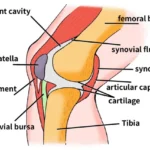Chronic arm pain can disrupt daily life and lead to physical and emotional distress. While traditional pain management methods like medication and physical therapy are effective, mindfulness offers an additional, drug-free approach to managing chronic pain. Mindfulness practices focus on bringing awareness to the present moment, allowing individuals to alter their perception of pain and improve their ability to cope with it.
This article explores how mindfulness techniques can be used to manage chronic arm pain, and provides answers to common questions about this approach.
Understanding Mindfulness and Its Role in Pain Management
Mindfulness is the practice of focusing on the present moment without judgment. In the context of chronic pain, mindfulness encourages patients to become aware of their pain without reacting to it emotionally. By practicing mindfulness, individuals can shift their attention away from the suffering caused by pain and focus on the sensations as they are, helping reduce the mental and emotional distress that often exacerbates physical discomfort.
Research shows that mindfulness-based techniques can reduce perceived pain levels by altering how the brain processes pain signals. Regular mindfulness practice can lower the intensity of pain and reduce the need for pain medications in some patients.
Mindfulness Techniques for Managing Arm Pain
Mindful Breathing
One of the most fundamental mindfulness practices is mindful breathing. This involves focusing your attention on your breath as it moves in and out of your body. By anchoring your awareness on your breath, you can reduce the tension that comes with chronic arm pain. Mindful breathing helps calm the nervous system, which can alleviate pain.
Body Scan Meditation
Body scan meditation is a technique where you mentally scan your body from head to toe, paying close attention to any sensations of pain, tension, or discomfort. When you reach the arm area, acknowledge the pain without judgment, and allow yourself to focus on how the pain feels without trying to resist it. The goal is to observe the sensations and release any emotional attachments to the pain.
Mindful Movement
Gentle exercises like yoga or tai chi, combined with mindfulness, can improve mobility and reduce arm pain. These activities involve slow, controlled movements that help you stay aware of how your body moves and responds. By practicing mindful movement, you can strengthen the arm while minimizing strain, which can help alleviate pain over time.
Walking Meditation
Walking meditation can help redirect focus from the pain in your arm to the rhythm of your steps. This practice involves walking slowly and paying attention to how your feet connect with the ground. It’s a way of giving your body gentle movement while taking your mind away from the pain. Although the primary focus is on walking, it can be a helpful distraction from chronic arm pain.
Mindful Acceptance
Chronic pain is often accompanied by frustration, anxiety, or sadness. Mindful acceptance teaches you to acknowledge your pain and emotions without letting them overwhelm you. By practicing acceptance, you reduce the tendency to resist the pain, which can often make it worse. Through acceptance, you learn to coexist with the pain rather than fight against it.
Frequently Asked Questions
How does mindfulness reduce chronic arm pain?
Mindfulness reduces pain by shifting your awareness from the pain itself to your breathing, bodily sensations, or movements. This shift in focus helps decrease the intensity of the pain by altering the way your brain processes pain signals.
How often should I practice mindfulness to manage pain?
Consistency is key. Practicing mindfulness daily, even for just 10-15 minutes, can bring about significant improvements in your ability to cope with chronic pain. Over time, this regular practice can help reduce both the physical and emotional impact of pain.
Can mindfulness cure chronic arm pain?
While mindfulness cannot cure chronic arm pain, it can reduce the intensity of pain and improve your quality of life. It is best used as a complementary treatment alongside other medical interventions like physical therapy or medication.
Is mindfulness safe for everyone?
Yes, mindfulness is a safe, non-invasive practice that anyone can try. However, it’s essential to consult with a healthcare professional if you have concerns, especially if you have severe psychological or emotional responses to pain.
Can I combine mindfulness with other pain management techniques?
Absolutely. Mindfulness works well alongside traditional pain management techniques such as physical therapy, medication, and alternative treatments like acupuncture or massage. It enhances your overall approach to pain relief without interfering with other treatments.
Conclusion
Mindfulness offers a powerful way to manage chronic arm pain without medication. Through mindful breathing, body scanning, mindful movement, and acceptance, individuals can shift their focus from the pain to the present moment, reducing its intensity and improving their overall quality of life. Regular practice can lead to significant improvements in how you cope with pain, making it easier to live a fulfilling life despite the discomfort.





